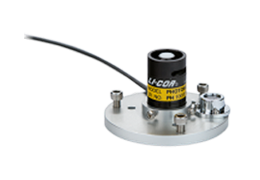The amount of radiation incident on a given flat (not necessarily level) surface area varies with the angle of incidence. Lambert's cosine law says that the radiant intensity observed from an ideal diffusely reflecting surface is directly proportional to the cosine of the angle of incidence.
When radiation strikes a given surface area at a greater angle of incidence, less radiation is received on that surface (see Figure 5‑2). For instance, when radiation strikes a given unit area at a 60° angle of incidence, half as much is received compared to a 0° angle of incidence. The same amount of radiation is spread over more surface area at a 60° angle of incidence.
Cosine Response
A cosine-corrected sensor follows Lambert's cosine law and provides the most accurate measurements of radiation on a flat surface from all angles. Cosine correction ensures accurate measurements under various conditions such as low light levels and low solar elevation angles.
The LI-210R is fully cosine-corrected, with sensitivity to light nearly equal at all angles of incidence to about 82° angle of incidence (). Errors are typically less than ± 5% for angles less than 82° from the normal axis. At 90°, a perfect cosine response would be zero, and any error at that angle is infinite.
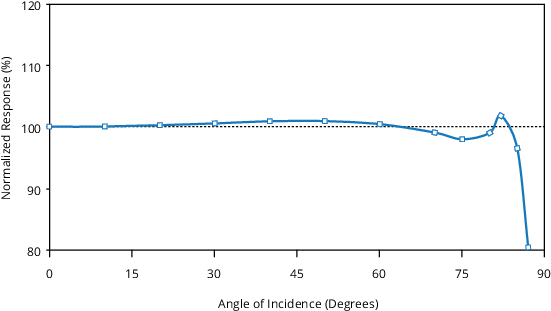
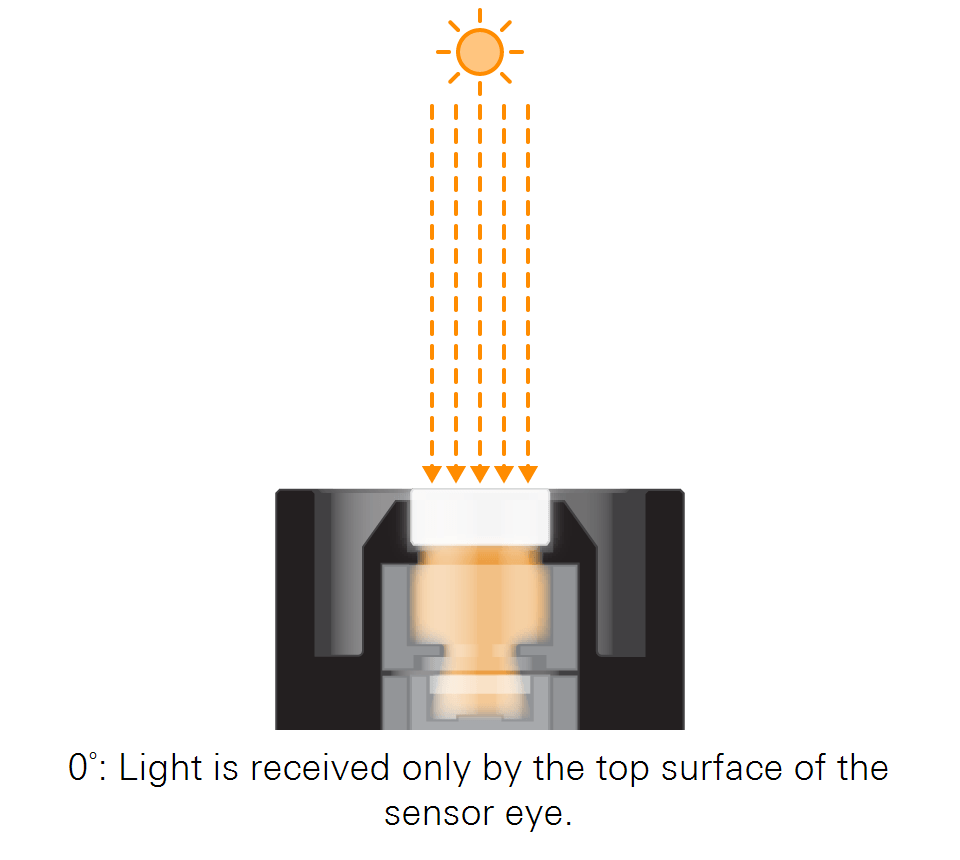
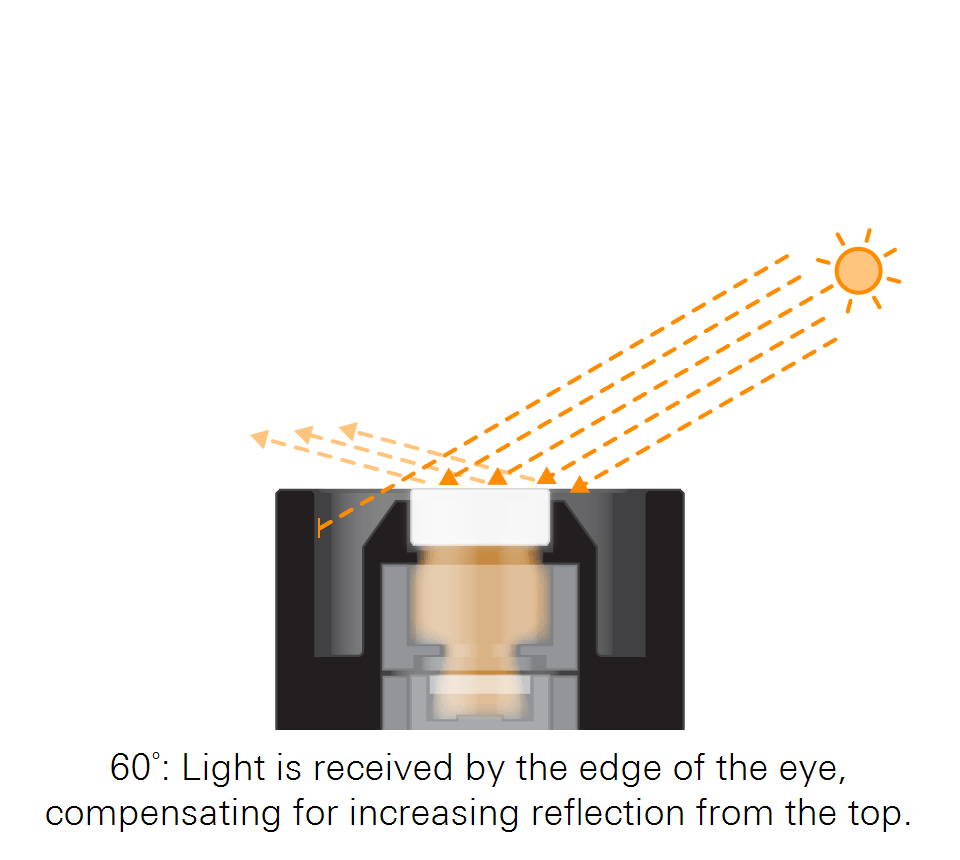
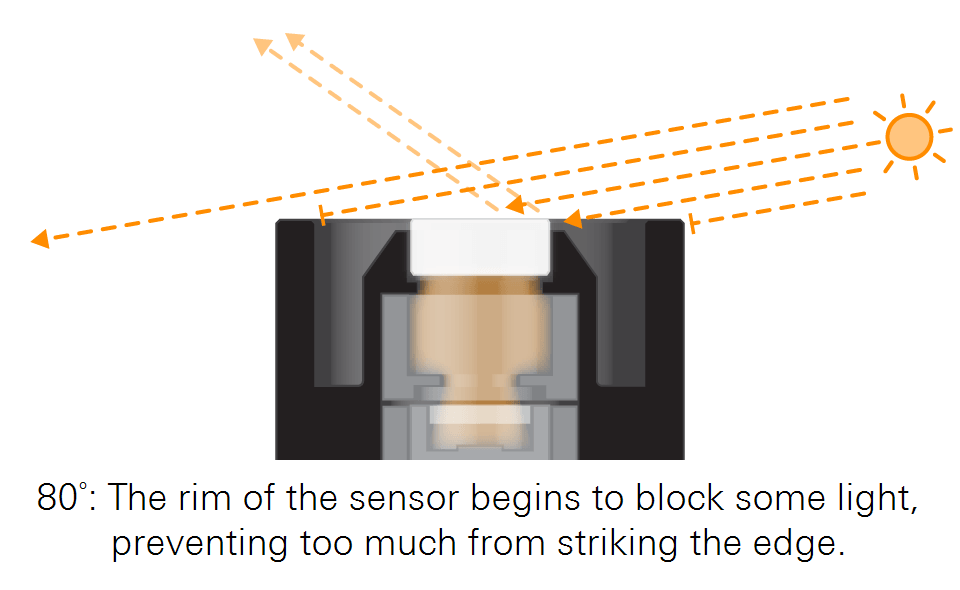
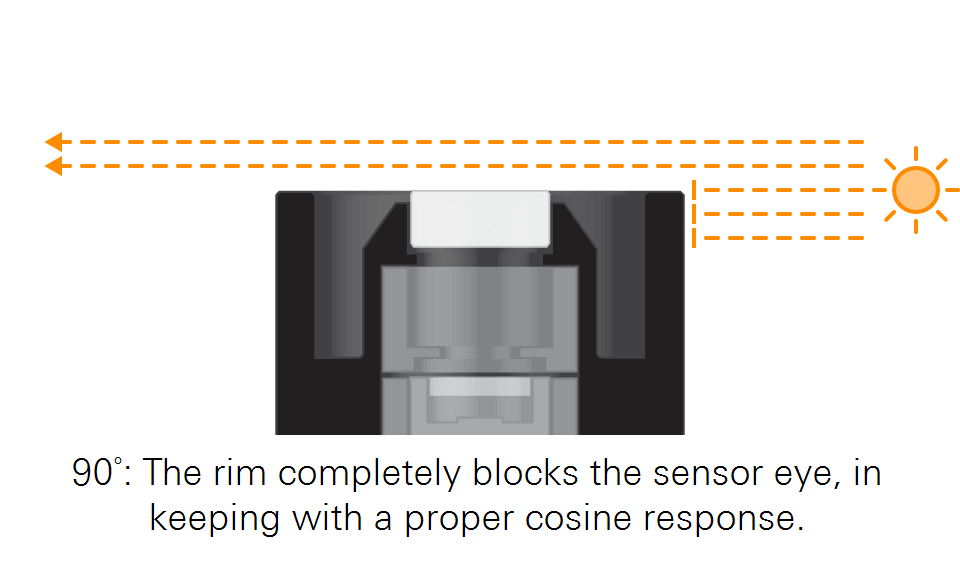
Figure 5‑2 shows how the design of the sensor creates the proper cosine response. Radiation is received by an acrylic disc called a diffuser, or eye. When radiation strikes with a greater angle of incidence, more is received by the edge of the eye. This compensates for increasing reflection from top surface as the angle of incidence grows larger. Beyond an angle of about 80°, the rim of the sensor begins to block some light in order to maintain the correct response as more radiation is received by the edge of the eye. At a 90° angle of incidence, the rim completely blocks the eye, in keeping with a proper cosine response.
Spectral Response
The spectral response of a typical LI-210R Photometric Sensor corresponds closely to the C.I.E. standard observer curve. LI-COR has had sensor calibration data verified by the National Research Council of Canada (NRC), one of the major standards laboratories in the world.
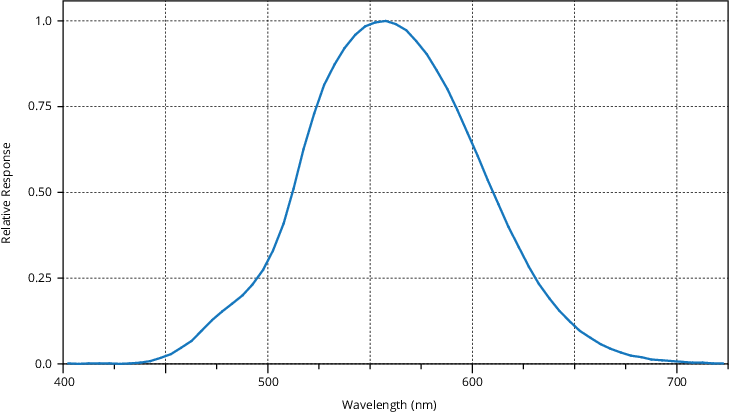
Calibration
Each LI-COR radiation sensor is fully calibrated at the factory, and no user calibration is needed. Acquire the calibration for your sensor by entering the serial number at licor.com/support/home.html. The recommended recalibration interval is every 2 years. Return your sensor to LI-COR for recalibration (see Factory Recalibration).
Each LI-210R Photometric Sensor is calibrated against a standard lamp using 683 lumens per watt as the value of spectral luminous efficacy at a wavelength of 555 nm. This value conforms to the recommendations of the International Committee for Weights and Measures (CIPM). The uncertainty of calibration is ± 5%, traceable to the U.S. National Institute of Standards and Technology (NIST).
